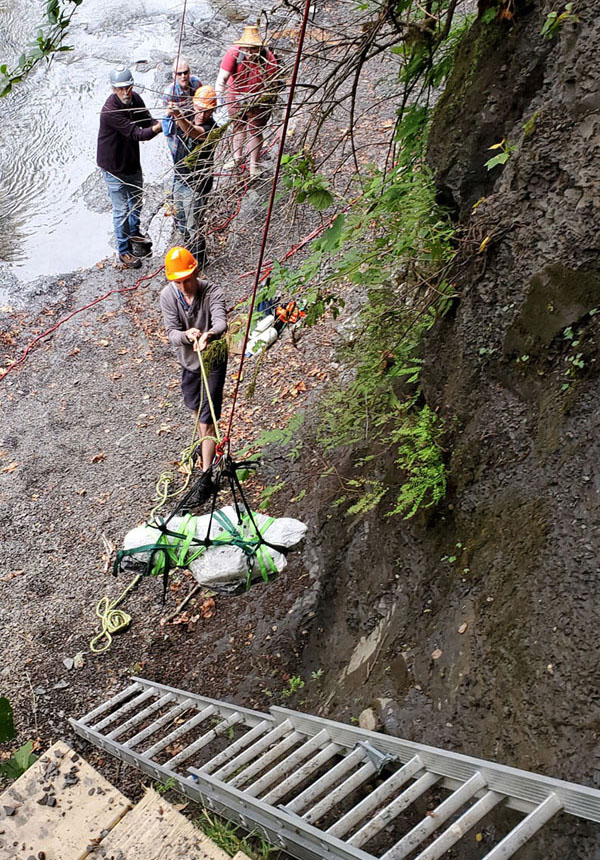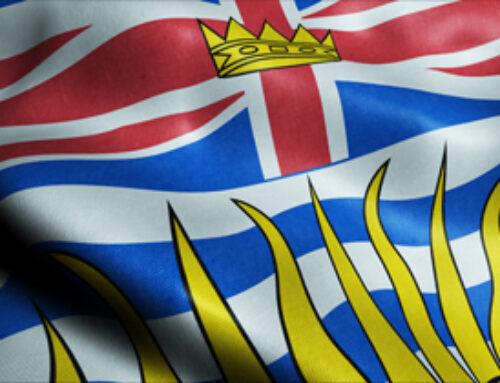A Team Effort for Discovery of Juvenile Elasmosaur

Fossil discoveries in the Comox Valley usually occur with help from river erosion and from observation by amateur palaeontologists and people who take fossil tours to find out more about the Comox Valley’s natural history and ancient life on Vancouver Island. The discovery of “Baby E” the museum’s juvenile elasmosaur, required some time to explore further, and then, “all hands on deck”.
A spectacular summer 2020 juvenile elasmosaur discovery was a direct result of the museum’s guided fossil tours over the years as Natural History Curator, Pat Trask, and museum visitors continued to find small remains of an animal at the base of a Trent River cliff.
Were these small discoveries found over the years just remains of an animal washed down from further upriver? Trask took time to explore this question one 2020 summer evening and discovered the cliff-face resting place of a juvenile elasmosaur.
Located 12 meters above the riverbed in a solid shale bank, the excavation took two months of precarious effort with ropes and ladders to extract the elasmosaur. Trask and crew used hammers, hand chisels and a battery powered chisel gun to excavate the 85-million-year-old animal. Museum staff and community volunteers helped to build a platform and worked with the plaster jackets placed around the remains.
The museum is now thrilled to announce that the summer 2020 discovery is ready for public viewing. Referred to as “Baby E” this specimen is quite an eyeful. After excavation, staff spent months preserving and preparing it in the museum lab. The cleaning and gluing process with specialized tools yielded an excellent well-preserved fossil.
The main body is about sixty percent complete and 2 metres long. Cliff face erosion caused parts of the head, neck, front left flipper and tail bones to fall into the river and flow into downstream currents. Thought to be a juvenile, the complete animal would have been about 5 metres long compared to an adult of 12 metres. Technicians cleaning the fossil also found almost 200 gastroliths, which are rocks found in the stomach and believed to aid in digestion.
Elasmosaurs were marine reptiles first described as “A snake threaded through a turtle’s body.” In 1988, Mike Trask discovered the first elasmosaur in the Comox Valley on the Puntledge River. Years later, Joe Zanbilowicz and Rick Ross discovered mosasaurs and the list of discoveries goes on. These fossils and more are on display in the museum’s permanent gallery area. We look forward to seeing you!





